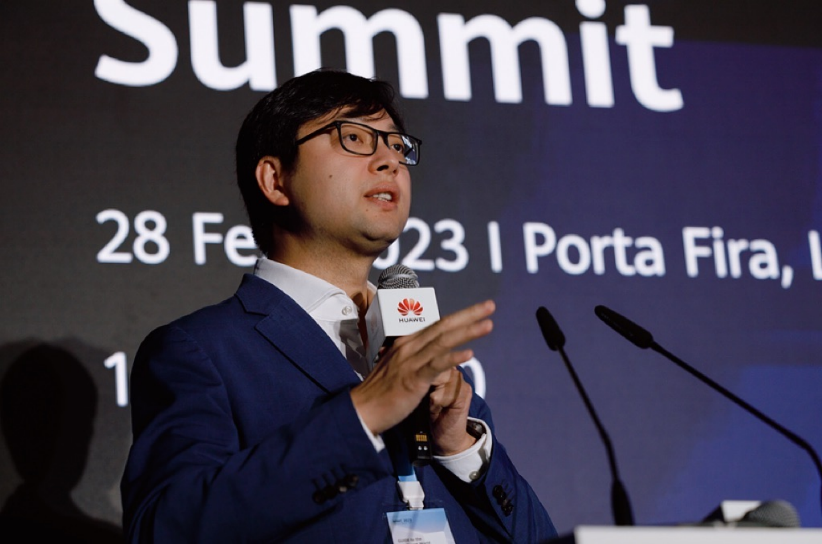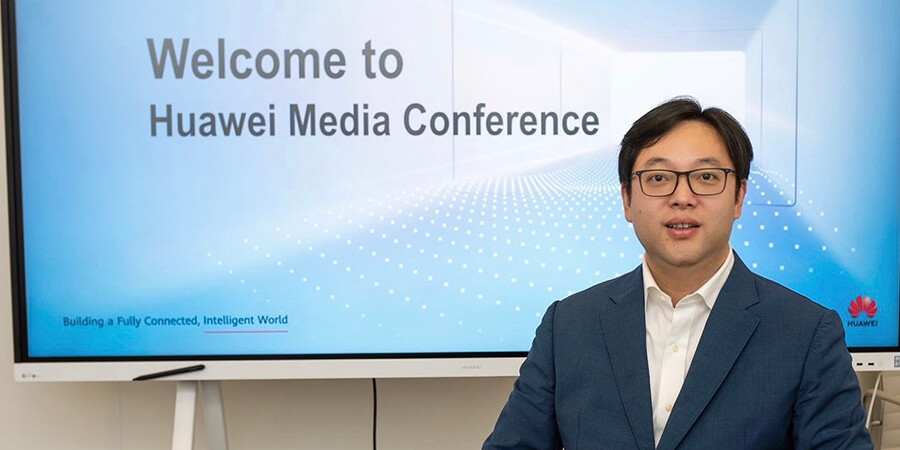At the Mobile World Congress (MWC) Barcelona 2023, Telecom Review interviewed Fang Xiang, Vice President of Huawei Wireless Product Line, to learn about the latest developments and current trends in 5G networks, as well as innovations to build new network capabilities in a digital age.
Countries understand the importance of advancing 5G as a critical driver to chart industrial and economic growth. By the end of 2022, 243 commercial 5G networks had been deployed in 92 countries and regions from GSA report. Globally, terminal vendors and players have been actively launching entry-level 5G devices to embed 5G technology in all rungs of society. A total of 1,800 types 5G devices were released globally by the end of last year.
While this signals a healthy pace of 5G growth, Fang Xiang cited a changing digital environment and hence the need for 5G to evolve to deliver optimal value.
Diving right into the latest 5G developments and trends, Fang Xiang first shared that 5G services will become more inclusive and universal to benefit a wider group other than high-value customers. Secondly, newer applications, including voice over new radio (VoNR), the broadcasting of sports games, virtual reality (VR), augmented reality (AR) and cloud gaming, are rapidly emerging as digital lifestyles and become deeply entrenched in society. These services must be supported by new network capabilities and network construction standards going forward. Thirdly, some operators are transitioning from 5G non-standalone (NSA) to 5G standalone architecture (SA) to support newer and more agile service applications.
To facilitate a smooth transition in network architecture, Fang Xiang noted that new requirements must be put in place.
To achieve greater ubiquitous connectivity, richer 5G digital applications and newer network architecture, all TDD and FDD bands should be used for 5G to support newer services and applications. "The evolution of all bands to 5G will help carriers optimize the value of each band, improve the spectral efficiency of 5G and grow network capabilities on downlink, uplink, latency and coverage," Fang Xiang said.

Challenges to Evolve All Bands to 5G
The industry must leverage and coordinate all bands to provide optimal 5G experiences. However, this is not without its challenges.
On the network side, as 5G upgrades, more new FDD and TDD bands are deployed. Given limited tower or antenna space, innovative products and solutions are needed to simplify engineering deployment as carriers plan for future network evolution. Carriers are also pressured to work toward greener, more energy-saving future networks to cater to a three- or fourfold capacity growth while maintaining the same levels of energy consumption.
They must be able to power newer digital applications, provide ubiquitous connectivity and match more SA architecture to yield a reliable and stable service quality, ubiquitous coverage, latency-guaranteed experience and deep-reaching indoor coverage. The network is required to coordinate all frequency bands to achieve better 5G experience. Additionally, carriers need to maximize spectrum value while reconstructing old 2G/3G devices and deploying devices for new applications. There is also a need to address the shortcomings of legacy 1T/2T network equipment.
Ultra-Wideband, Multi-Antenna Solutions
Legacy spectrum, such as the FDD, is fragmented, limited in bandwidth and operates on 1T/2T equipment. Carriers need to leverage all bands to 5G to maximize spectrum efficiency for newer applications.
In line with current industrial technological direction and demand, Huawei introduces several innovations to employ ultra-wideband and multi-antenna technologies to achieve all bands to 5G and deliver greater value for carriers.
Elaborating on these innovations, Fang Xiang introduced the ultra-wideband remote radio unit (RRU) with the ultra-wideband power amplifier to help carriers unleash the full potential of FDD spectrum and realize coordination of the fragmented FDD band.
To more effectively leverage FDD bands and maximize the value of limited spectrum resources, Huawei's multi-antenna technology breaks away from 1T1R/2T2R to 4T4R/8T8R/M-MIMO for even more channels, with Huawei’s unique accurate calibration algorithm and to yield high-precision beamforming in order to enhance network capacity and coverage, as well as user experience.
As carriers seek out greener and more energy-saving solutions, Huawei's 5G equipment and hardware architecture focuses on high-efficiency components. Huawei's systematic three-layer green solution that covers sites, networks, and operations meets carrier's demand for "low power consumption during off-peak hours and high energy efficiency during busy hour" and green 5G goals.
Finally, the PIM (Passive Intermodulation) interference in the deployment of ultra-wideband, multi-antenna systems are both addressed by Huawei's leading PIMC (Passive Intermodulation cancellation) algorithms to eliminate interference. This innovation allows carriers to quickly and effectively deploy these ultra-wideband, multi-antenna solutions. Together, these innovations help carriers evolve all bands to 5G in order to achieve superior user experiences.
|
Huawei FDD Beamforming Series Win GSMA GLOMO's 'Best Mobile Technology Breakthrough' Award in MWC2023. Huawei's FDD products have now received GSMA GLOMO awards for two consecutive years, with FDD Gigaband winning the "Best Mobile Network Infrastructure' Award in 2022. This demonstrates the industry's recognition of Huawei's innovative FDD ultra-wideband multi-antenna concept and the value that the series of products and solutions offers. 2023 GLOMO Categories and Awards (mwcbarcelona.com) Huawei FDD Beamforming Series Win GSMA GLOMO's 'Best Mobile Technology Breakthrough' |
"We hope to work together with the partners in the industry to promote ultra-wideband, multi-antenna technologies to achieve breakthroughs in addressing carriers' needs. This adds value for carriers to realize the objective of all bands to 5G," Fang Xiang concluded.






